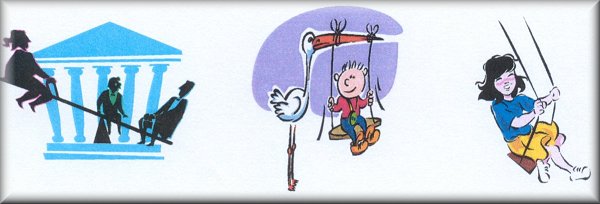
Games and Entertainments: Children's games
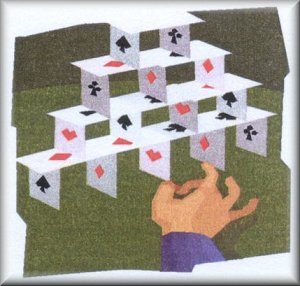
Girls played with dolls, some of which even had articulated arms and legs. Several examples of dolls have been found. They also played with small kitchens and small pots for cooking, shops for selling, and small houses.
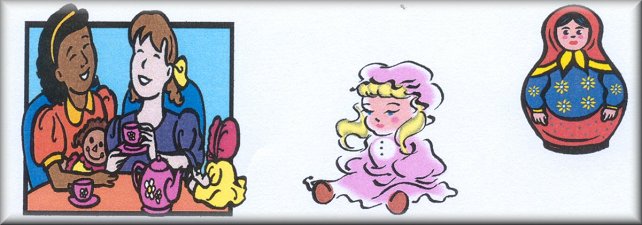
Children also knew puppets, which were moved and danced by means of a thread (neruus). Some of the remains found show us how the puppet theatres which were used to entertain children were.
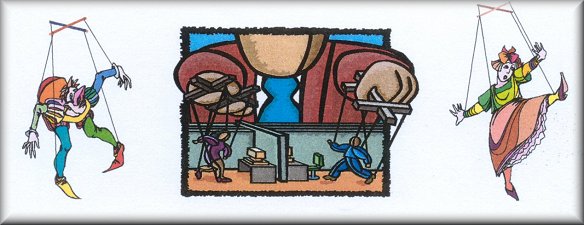
Roman people called delicium or deliciae everything that could be used to amuse children, such as domestic animals which they used as pets, such as dogs,, sheep, rabbits, mice, turtles, weasels, eagles, falcons, pigeons, partridges, cocks, ducks, geese, swans, nightingales etc. They also played with crickets and cicadas which were kept in small cages done by themselves.
Nowadays, there are still many games which were played by Roman children. As well as building small stone houses or sand houses on the beach, they also hooked mice to small carts. When the children grew, they hooked dogs or sheep to the carts and sometimes the carts were pulled by other children while the boy who organised the game, the leader of the group, got on the cart and played the part of an auriga.
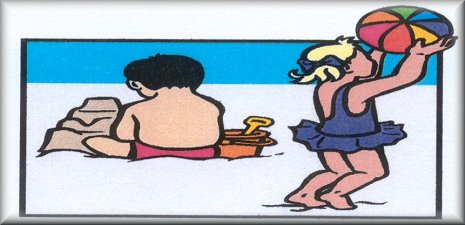
They played 'hide and seek' too: one of the children was situated in a corner or covered his/her eyes while the rest of the group looked for a place to hide. The one who was found lost the game and would be the next one who would have to count whilst the rest of the group hid themselves.
'Odds and evens' ('Pares o nones'): one child kept some small stones in his/her first and sked his/her partner to guess how many he had; if the partner succeeded in it (s)he would win the game.
'The bronze fly': one of the boys had his eyes bandaged and called "I'll catch the bronze fly". The others answered: "You'll hunt but you won't catch it." All of them ran until one of them was caught.
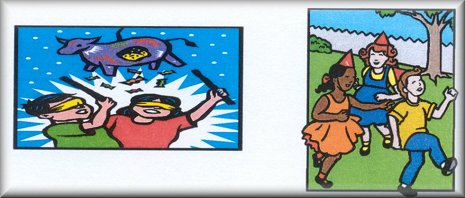
'Blind man's buff' was very similar to the previous one but they had to catch and recognise the others without speaking.
'Heads or tails' (caput aut nauis): Jano's head appeared on one side of some coins and on the other one there was the ram of a ship. They played this game in the way that we play it nowadays.
'Giving someone a scare': children are fond of frightening the others, especially the youngest. This game was called mormolycion, which was the name given to the tragic or comedy masks whose ridiculous or terrible features frightened young children. One of the children hid behind a door and when his fellows were distracted he suddenly opened the door and appeared wearing the mask.
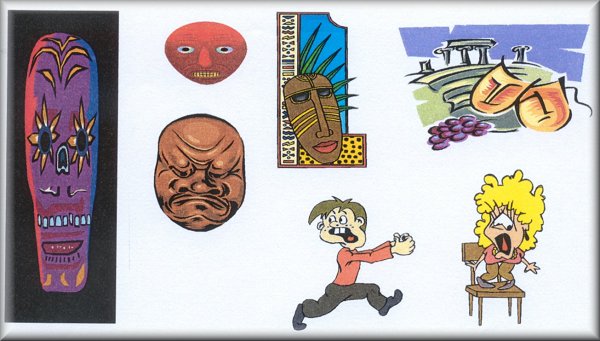
They played with hoops (orbis, trochus) which they led by means of straight sticks or sticks that were bent at the tip (clauis). The hoops were more or less big; old children used them with some attached rings or with bells which sounded when they rolled them. The boy who could roll the hoop very well, not only rolled it in a straight way but he should describe circles and go round in circles with the guide as well. As a curiosity, we can say that a didactic poem was written about the art of leading the hoop. Later, they also called trochus to the spinning tops (turbo) and to the object that we call "diabolo" nowadays. This one was an instrument of sorcery prediction (rhombus).
They also enjoyed the spinning top (turbo, turben), which was moved by means of a string or whip (scutica, flagellum). The spinning tops were usually made of boxwood (buxus) and they were identical to ours.

Another game which was played since children were very young was the "morra" (digitus micare). Micare means moving quickly. Two players, one in front of the other, raised their right hand with some fingers extended and others folded over. Then, both of them would say a number at the same time, the one who got the right number of unfolded fingers would be the winner.

'Three on line': this game was played with some small stones put in a square divided in four, with lines from one side to the other crossing the centre and added the diagonals from an angle to the other. The aim of the game was putting the three own scores in any of the lines and the key of the game would be to prevent the other from doing it by interrupting the opponent scores.
'Riding on a cane' (equitare in arundine, as Horacio says: it was a game for very young children.
When they joined in groups, they used to play other collective games, in which the most skilful was always the winner. They played with the nuts they brought from their homes. This game hasn't changed too much till today: they put heaps with four nuts and they threw a heavier object, such as a stone or a piece of metal, from the distance pointed out before. They got the nuts when, after throwing the object, the nuts came apart. Another game with nuts consisted in putting a heap with three nuts and throwing a fourth nut from a distance without destroying the heap. The boy who got it would take the three nuts. They also played a kind of game similar to what we call "the frog" nowadays. It consisted in bringing in the nuts through the mouth of a vessel, placed at a distance.
Roman boys and girls played with balls made of baked mud, round stones and even pearls. The game was very similar to the one our children play called "marbles". They also knew knucklebones (talis) from animal bones. We can also see in many paintings that they played the "nail and pot", "el clavo y la marmita".
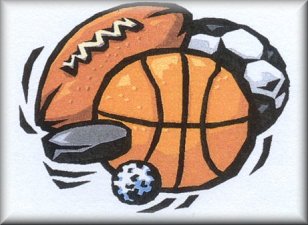
They played other games imitating old people. They played fightings: Carthaginian and Roman people. This game is still played by children nowadays.
As they grew, the kind of games they used to enjoy were changed: riding, swimming, throwing the discus, the javelin etc.
Ball games (pila, sphera) were played at any age, not only by children, and they had different names according to the kind of ball they used: trigonalis, paganica, follies and harpastum. These words were used to name the game and the ball. The balls were made of hair or feather inside, some were heavier than others. They played in any place, in the forum, in the gymnasiums and in the hot baths.
Roman people, the same as Greek people, enjoyed very much spending their time on different types of swings or balances. They made a distinction between them, as we do now. The balance was composed of a longer or shorter plank, resting on a stone or a trunk at its middle point. A person who was lifted and lowered alternately sat at each end. The swing was a seat held to a timber or to the branches of a tree by two ropes. The person who was sitting held to the rope with two hands and swinged by means of his/her own impulse, or because another person pushed him/her.
